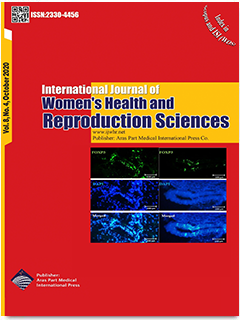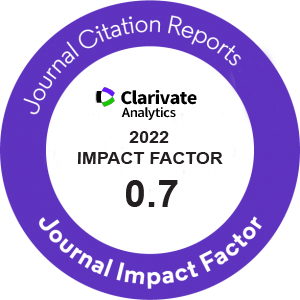| Original Article | |
| The Association Between Vaginal Candidiasis and Health-promoting Lifestyle in Iranian Women: A Cross-sectional Study | |
| Parvin Azhrak1, Mahin Kamalifard2, Mojgan Mirghafourvand2, Soleiman Khedri3, Shirin Hasanpour4 | |
| 1Student Research Committee, Department of Midwifery, Nursing and Midwifery Faculty, Tabriz University of Medical Sciences, Tabriz, Iran 2Department of Midwifery, Nursing and Midwifery Faculty, Tabriz University of Medical Sciences, Tabriz, Iran 3International Campus, Iran University of Medical Sciences, Tehran, Iran 4Women’s Reproductive Health Research Center, Tabriz University of Medical Sciences, Tabriz, Iran |
|
|
IJWHR 2020; 8: 412-417 DOI: 10.15296/ijwhr.2020.66 Viewed : 2104 times Downloaded : 1669 times. Keywords : Vulvovaginal candidiasis, Healthy lifestyle, Women health |
|
| Full Text(PDF) | Related Articles | |
| Abstract | |
Objectives: Vulvovaginal candidiasis is the second most common gynecological infection in the world that can bring about unfavorable consequences for the health and life of the women of reproductive age. Accordingly, the purpose of this study was to determine the prevalence of vulvovaginal candidiasis and its relationship with the health-promoting lifestyle in Boukan, Iran. Materials and Methods: This cross-sectional study was conducted with the participation of 320 married women aged 15-49 years who referred to all health centers of Boukan. The subjects were selected using a convenience sampling technique from October 2018 to March 2019. Written informed consent was obtained from the participants who were then asked to complete a demographic questionnaire and the Health Promoting Lifestyle Profile-II (HPLP-II). Finally, the data were analyzed in SPSS, version 24. Results: A total of 124 women (38.8%) had vulvovaginal candidiasis, and the total mean (standard deviation) score of health-promoting lifestyle was 2.4 (0.2) from the possible range of 1-4. None of the demographic characteristics and vulvovaginal candidiasis were significantly related based on the results (P < 0.05). The highest (2.8±0.3) and lowest (1.6±0.4) mean scores belonged to “nutrition” and “physical activity” subdomains, respectively. In addition, no statistically significant relationship was found between vulvovaginal candidiasis and the total mean score of health-promoting lifestyle and its subdomains (P > 0.05). Conclusions: In general, more than one-third of the participants had vulvovaginal candidiasis. Eventually, the infection had no statistically significant relationship with any of the characteristics of demographic information and health-promoting lifestyle. |
Cite By, Google Scholar
Google Scholar
PubMed
Online Submission System
 IJWHR ENDNOTE ® Style
IJWHR ENDNOTE ® Style
 Tutorials
Tutorials
 Publication Charge
Women's Reproductive Health Research Center
About Journal
Publication Charge
Women's Reproductive Health Research Center
About Journal
Aras Part Medical International Press Editor-in-Chief
Arash Khaki
Mertihan Kurdoglu Deputy Editor
Zafer Akan























